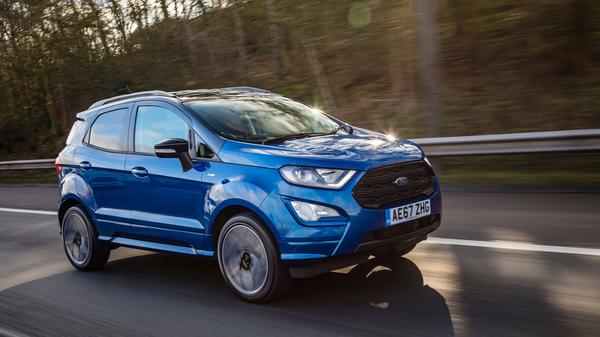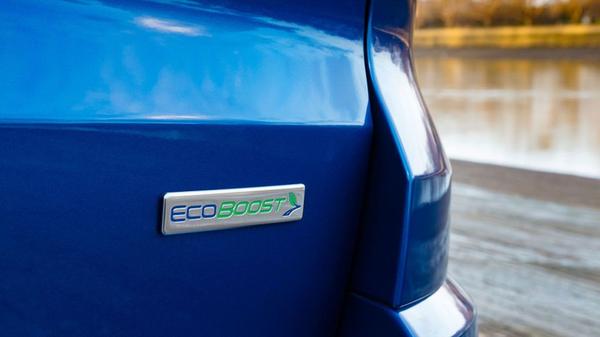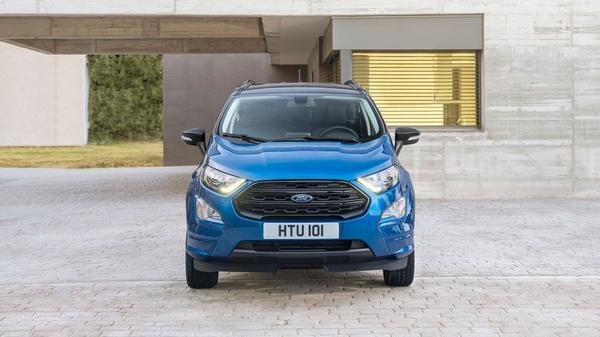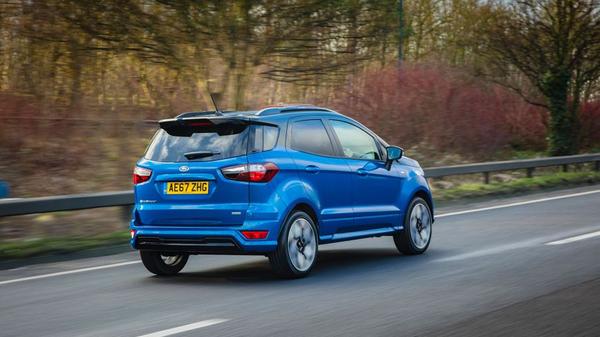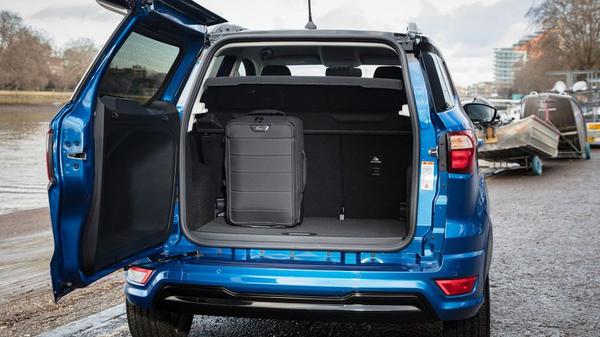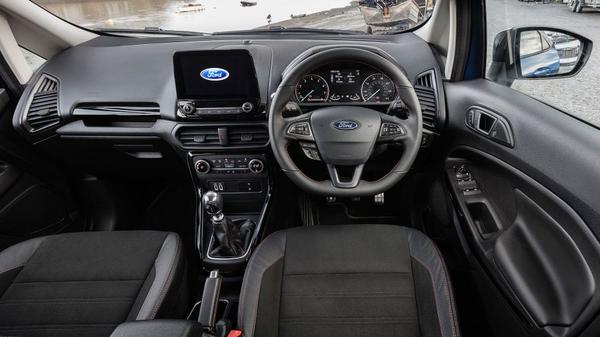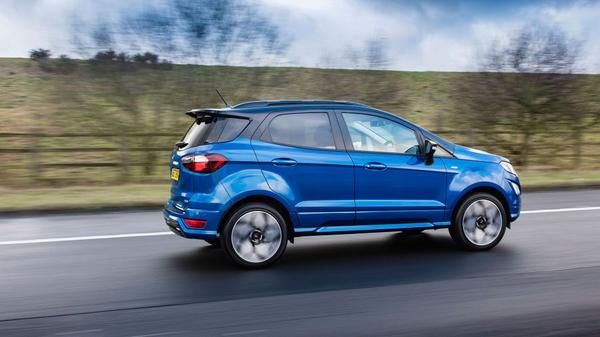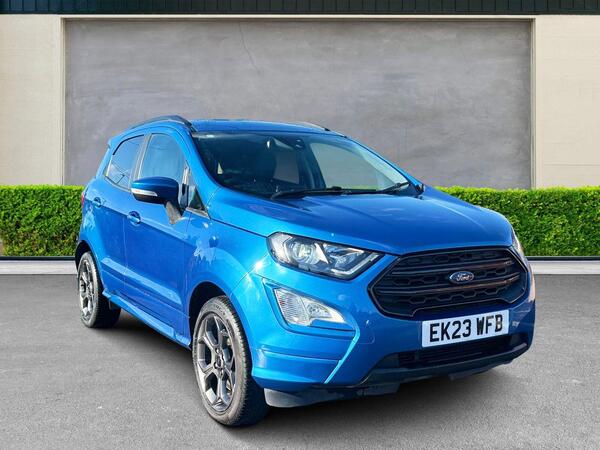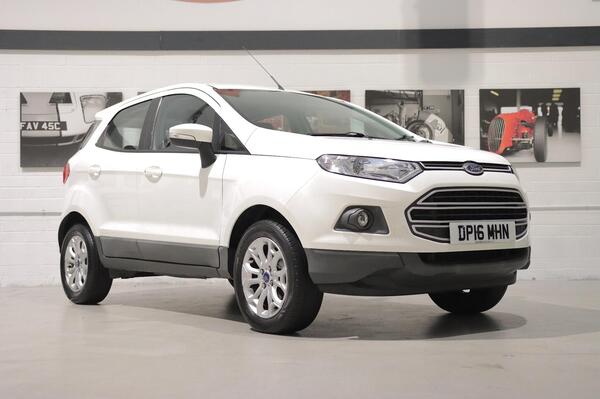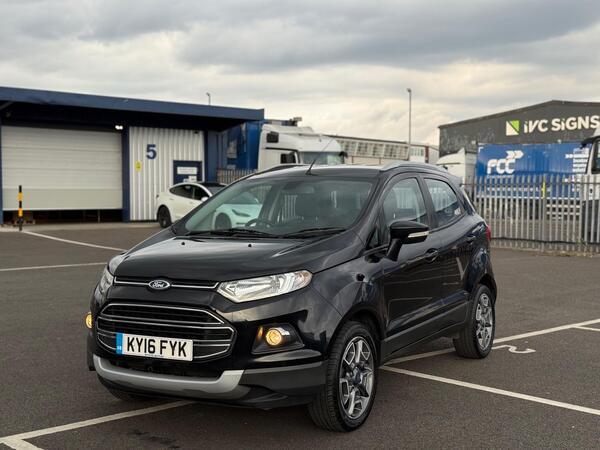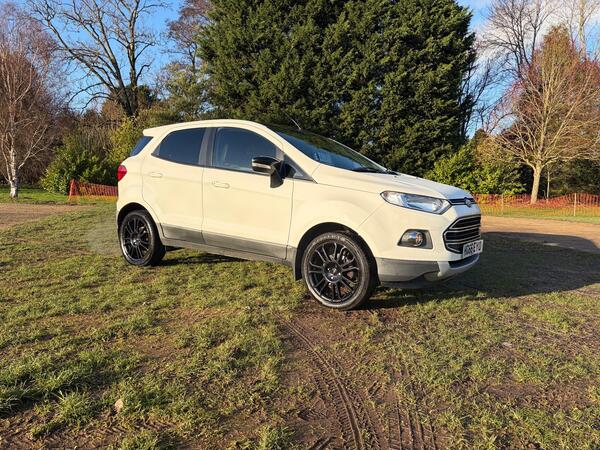The cabin looks fairly similar to that of the latest
Fiesta supermini, with big, easy-to-use controls, and a floating touch-screen that displays all the
infotainment menus. There are a few tough, abrasive plastics, and some of the panels don’t fit together with the same precision as those found in a
Seat Arona, but it is better for quality than the previous Ecosport.
You get a commanding view of the road ahead, but the thick windscreen pillars create quite significant blind spots, which can make it difficult to spot other cars when pulling out of junctions or when trying to join roundabouts. The steering wheel does have a decent range of adjustment, but the area around the pedals might seem a bit cramped for some drivers.
There’s a decent amount of space for four, along with the additional nicety of reclining rear seats. There’s also plenty of room under the front seats for those in the back to slide their feet underneath. In even better news, Ford has moved the old Ecosport’s rear door-mounted spare wheel to the options list, as it blotted out even more of the already limited rear visibility, and added a lump of deadweight that made opening the side-hinged rear door a real struggle.
However, the side-hinged rear door – which is designed for left-hand drive markets – remains. Fundamentally, because the door swings open towards the pavement, if you’re parked on the correct side of the road, you have to stand close to passing traffic to open it. What’s more, unless you’re able to limbo, you’ll need to find a very generous parking spot to ensure you can walk around the open door when unloading your shopping. At just 356 litres, the
boot is also on the small side compared with rivals, but at least the rear seat-backs split-fold and tumble up against the backs of the front seats to boost your load-carrying options. Alternatively, you can fold the seat backs onto their corresponding cushions and use the adjustable load board to fill in the large void in the boot floor.
The Ecosport is a tall vehicle with a comparatively small footprint, and in order to prevent it from rolling around too much in corners, it has quite stiff suspension. That means you feel quite a lot of shudder when you’re just tootling up the high street, and when you go faster, bumps have an even more dramatic effect. What’s more, the stiff suspension doesn’t really help all that much with the handling anyway, because the Ecosport still feels decidedly top-heavy when you’re changing direction. That’s also the case on ST-Line models, which have an even sportier suspension setup.
We’ve driven three different versions of the Ecosport and all have displayed different levels of steering weight and feel. The overriding character common to all of them was a reasonable amount of feedback, albeit with an overly enthusiastic self-centring action. This means the steering can feel a bit too heavy when trying to hold the car steady in bends. You’ll also notice quite a bit of vibration through the steering wheel as the Ecosport’s suspension chunters over rougher surfaces, and quite a bit of tyre roar is evident at motorway speeds, but at least the weighty steering and firm suspension help the Ecosport feel secure and stable when you’re cruising.
